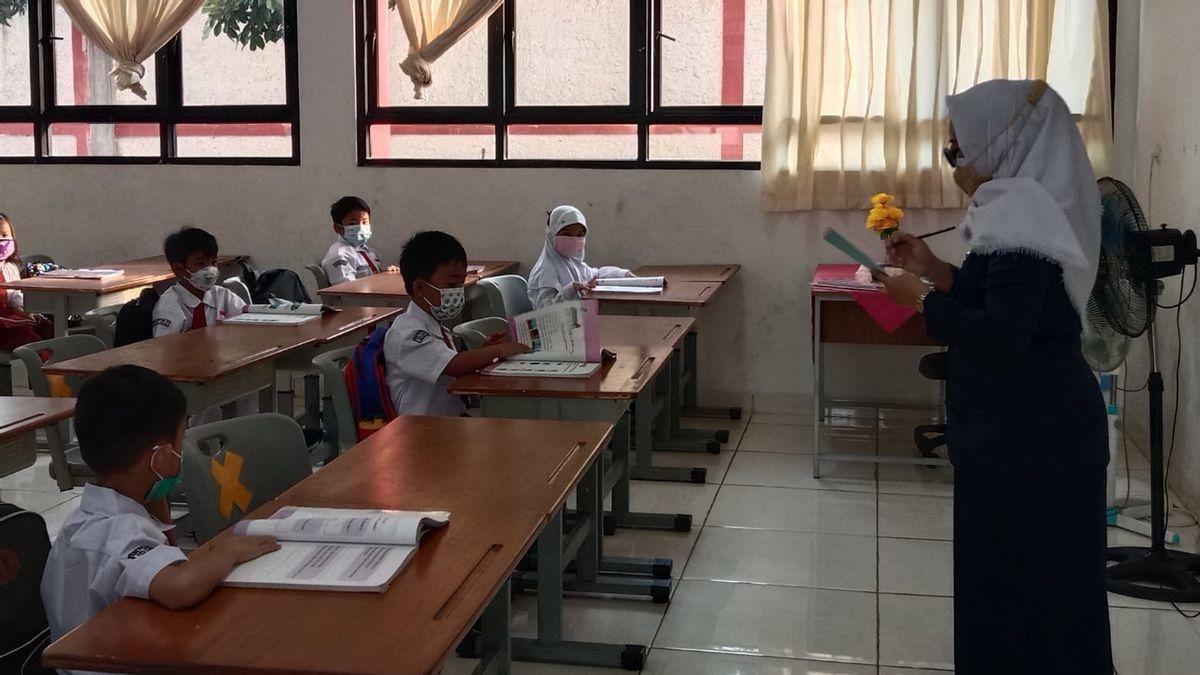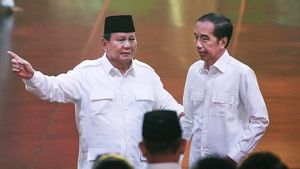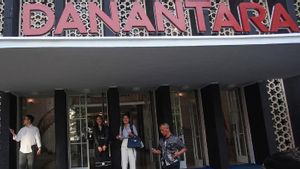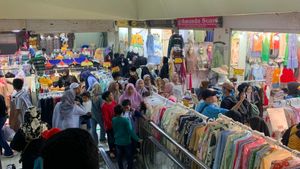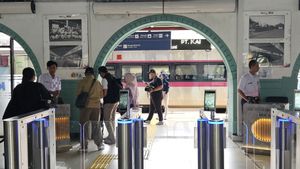JAKARTA - Limited face-to-face learning (PTMT) for primary and secondary schools has resulted in the emergence of a number of COVID-19 clusters. Dilemma. We understand PTMT must be done to avoid learning loss. However, is it the right strategy to open primary and secondary education first when more 'college children' are affected by vaccination?
Since last August 30, the government has imposed PTMT for PAUD, SD, SMP, SMA, SMK, MTs, MA to MI level schools located in Level 3, 2, and 1 zones. Today, almost one month since it was held, the Ministry of Education, Culture, Research and Technology (Kemendikbudristek) recorded 1,296 schools that reported COVID-19 clusters.
That figure means 2.78 percent of the total 46,500 schools that have implemented PTMT. According to the Director General of Early Childhood Education, Primary and Secondary Education (PAUD Dikdasmen) Jumeri, data were collected up to September 20. He detailed the distribution of school clusters by level: SD there are 581 schools, PAUD (525), SMP (241), SMA (170), SMK (70), SLB (13).
From the report, 11,615 students tested positive for COVID-19. Elementary school students are the most infected, with a figure of up to 6,908 students. Even with the teachers, who recorded up to 3,174 infections. At the junior high school level, transmission was recorded at 2,220 students and 1,502. In PAUD there are 953 students and 2007 positive for COVID-19. Then, at the high school level, 794 students and 1,915 teachers were positive.

Another note from the scope of SMK and SLB. Each recorded transmission at 609 and 1,594 (students/teachers) and 131 and 112 (students/teachers). Even so Jumeri did not think of a step back. He continues to encourage the opening of other schools to catch up with learning losses due to the pandemic. Currently, only 42 percent of the total 540,979 schools in Indonesia are PTMT.
"We need support from the regions to allow schools at PPKM levels 1-3 to immediately open Limited PTMs, the Health Offices of each region are also to accelerate the vaccination of educators which has become a priority," said Jumeri, launching the official website of the Ministry of Education and Technology, Wednesday, 22 September.
The determination of this PTMT policy is regulated in the Instruction of the Minister of Home Affairs (Inmendagri) regarding the Enforcement of Restrictions on Community Activities Level 4, Level 3, Level 2 Coronavirus Disease 2019 in the Java and Bali regions. The PTMT policy was also followed by the issuance of guidelines for school opening in the Joint Decree (SKB) of 4 Ministers.
Jumeri also explained, however, that the transmission that occurred in the school environment was relatively small. The figure of 2.8 percent became the basis for Jumeri's attitude. According to Jumeri, the recorded transmission percentage is also evidence that the strict health protocols implemented by the schools are working well. Even when clusters occur. According to the Decree of 4 Ministers, the authorities immediately moved.
"Comply with the Decree of the 4 Ministers, including the local government closing schools, stopping PTM Limited, conducting testing, tracing, and treatment if there are findings of positive cases of COVID-19," he said.
Is the PTMT priority right for school-age children?Education observer, Doni Koesoema said the actual achievement of vaccination is one of a number of variables that must be viewed comprehensively as a consideration for PTMT policies. In addition to vaccination achievement, other variables are zoning and other evaluations related to school readiness, parents and students.
So the problem is not with school children who are PTMT earlier than college students or vice versa. "But an analysis of the condition of COVID-19 in a district or city as well as the readiness of schools and parents. There must be an analysis of the local government on learning in schools and an analysis of schools on children's learning while at home," Doni said to VOI, Wednesday, September 22.
From an epidemiological perspective, Dicky Budiman, an epidemiologist at Griffith University, Australia, believes that PTMT's priority is correct. In COVID-19, the world's epidemiological data still shows that the younger you are, the less potential for transmission. "Under 17 years, the proportion of people infected is much smaller. The older you are, the greater the potential risk," said Dicky, contacted by VOI.
This happens because there are far fewer ACE2 receptors in children. The ACE2 receptor is a type I membrane protein that is the gateway to SARS-CoV-2, the infecting virus that causes COVID-19. "The name is that the receptors are few, the recipient cells are a little less likely. That doesn't mean it's impossible, right," added Dicky.
In addition, children's immunity is not yet fully developed. This makes them safer from potential fatalities. Dicky said most cases of COVID-19 deaths and fatalities occurred when the human body's immune response was excessive: a cytokine storm. Thus, in children, the risk of this aggravation is relatively lower.
PTMT must continue, vaccination must catch upDoni Koesoema calls this a dilemma. Learning loss must be overcome immediately. But once again, the basis of PTMT policy cannot be separated from the real achievements of vaccination. Besides vaccination, another variable is regional zoning based on case growth. So, Kemendikbudristek does need support. PTMT must continue. Vaccination is mandatory.
"Learning losses must be addressed immediately. If the government cannot do it simultaneously, make priorities. Especially in areas that are most affected. Make an objective evaluation and then intervene according to the needs of the region, schools and students," said Doni.
In essence, the implementation of PTMT policies must be in line with the basic science-based pandemic management strategy. Epidemiologist Griffith University, Australia, Dicky Budiman agrees. Schools, according to Dicky, have a unique position and function in the perspective of the pandemic. A pandemic basically cannot kill aspects of human life.
In terms of education, it is as important to protect students as it is to ensure that their learning rights are fulfilled. There is even a global agreement pushing for standard procedures for schools to be the first sector to open when the pandemic situation improves and the last to close when the outbreak worsens. The agreement, said Dicky, was based on scientific arguments.
“That school is not only for children to learn but there is a big impact. Big impact for the child, big impact for this country. One nation. This is not just a health problem. There is also the problem of the existence of a nation in future generations. That is why the issue of enforcing school openings is a very important priority,” said Dicky.

“Even in a very limited epidemic situation a hundred years ago, this condition has been enforced so that children are still in school, even outdoors. And that is indeed in accordance with the pandemic strategy in the majority of countries that it is now possible to start opening schools. Of course there is a safety net. So if there are those who think that schools should close, other than that, they are misguided, it is not in accordance with scientific arguments," added Dicky.
Now it's just a matter of how the authorities intensify vaccination for school-age children, at least 12-17 years old. Basically vaccination for 12-17 years is already running. However, if you look at the data, the speed is still far from ideal. The Ministry of Health's records as of August 30 recorded that vaccination for 12-17 years at the first dose only touched 2.61 million or 9.81 percent.
While the data for the second vaccine in the group is still 1.64 million or 6.15 percent. Despite mentioning the minimal risk of fatality for children, Dicky Budiman stated that in essence vaccination should touch all people, from children to the elderly. In the context of PTMT, vaccination of students is important to minimize the potential for transmission through herd immunity.
*Read other information about COVID-19 or read other interesting articles from Yudhistira Mahabharata.
Other BERNASThe English, Chinese, Japanese, Arabic, and French versions are automatically generated by the AI. So there may still be inaccuracies in translating, please always see Indonesian as our main language. (system supported by DigitalSiber.id)
